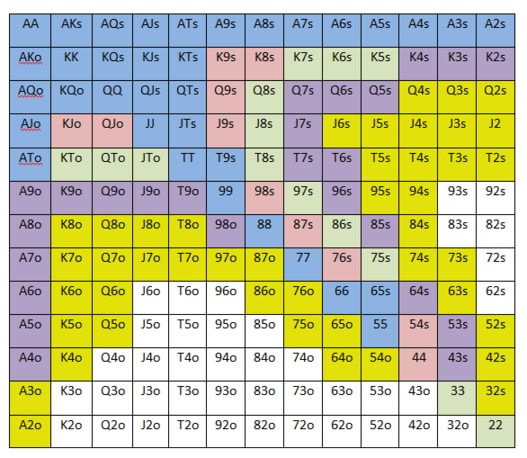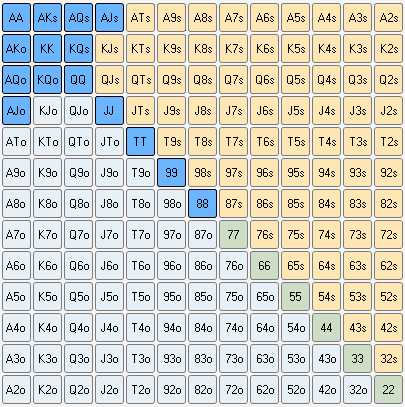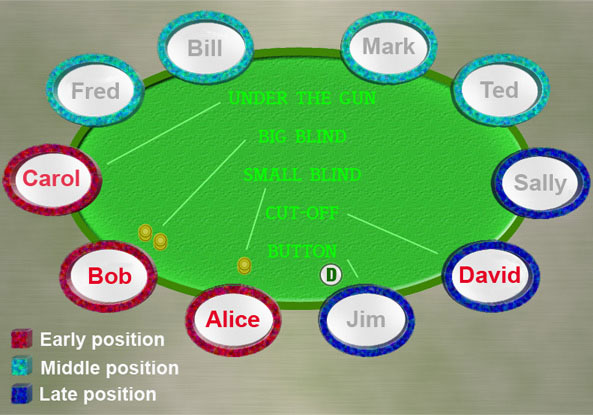Texas Holdem 3 Bet

How to Play Arkadium's Texas Hold 'Em Every round, each player will be dealt 2 cards that only they can see. Then, 5 cards are dealt to the middle of the table in 3 stages for everyone to see. In the first stage, 3 cards called the 'flop' are revealed. Why Light 3-Betting Works. Light three-betting is one of the first intermediate Texas Hold'em moves you should add to your poker skill set because it helps counteract a common problem you'll find in most Hold'em game: aggressive opponents. Blackhawk texas holdem tournaments 2020-12-15 folding texas holdem poker tables Views Description dragon play texas holdem texas holdem strip poker texas holdem card table what is a 3 bet in texas holdem history of texas holdem. The 3 Bet Iso-Raise. Not all weak players are passive limpers. Many have a distorted view of Texas Hold’em that is likely brought on by watching YouTube clips of Phil Ivey or Tom Dwan. They think they can get away with playing lots of hands, playing aggressively and turning a big profit.


Texas Holdem 3 Bet
This article will focus on pre-flop 3-Betting
So what is a 3 bet in poker?
Texas Holdem 3 Bet Range


Texas Hold'em 3 Bet
- A 3 bet refers to any time a player makes the third bet in a pot. 3 bets can happen on any street, but this article will focus on preflop 3betting. The mandatory blinds count as the first bet, the open-raise counts as the second bet, and any raise following this will be a 3 bet.
- ' The 3 bet most commonly refers to the time when you raise the pre-flop opening raise of your opponent'
- The same rule applies to the'4 bet' and the '5 bet' (It's basically just a shortened abbreviation for saying 'The third bet in the round')
- For value
- As a bluff
- To set up a post-flop steal (or pre-flop steal)
- Let’s suppose player A opens on the button. Player B who is in the big-blind knows player A likes to open an extremely wide range from the Button. Player B decides to 3 bet bluff.
- Player A however, by now, knows that player B knows that he is open-raising wide. Player A decides player B’s 3 betting range is wide enough and light enough to put In a 4 bet bluff. Player B though, knows that player A knows his 3 bet range might be light, and decides to 5 bet bluff assuming player A’s 4 bet range is sufficiently light.
- Usually the 3bet/4bet/5bet game ends here, because 100bb deep the stacks will often be all-in. Just because player A and player B are assuming each other is light though, that doesn't mean they are. Perhaps player B, knowing player A likes to 4 bet light, started 3 betting purely for value. Or, perhaps player A, knowing player B is capable of 5 bet jamming light, started 4 betting purely for value. If either player had made such an adjustment, they’d find themselves in a very profitable spot.
So when should we 3 bet???
There are 3 main reasons why you want to 3 bet. Before you 3 bet you should have one of them in mind:
Value
We 3 bet for valuebecause we believe our hand to be stronger than our opponents hand, so we want to milk as much money out of our opponent as possible. The best players to target with value 3 bets are those with a low fold-to-3 bet. This means that they will call your 3-bet with a decent amount of worse hands. A common mistake is to 3 bet a hand which may seem like a strong hand, but against the range that villain continues with, is relatively weak.
In a 6-max game, especially at lower stakes, you should only be 3-betting premium hands for value: 99+, AJss+. Please note that this range will widen if you face a loose opponent. So if you're facing up against an opponent who's going to call all of your 3-bets no matter what hand he is holding, then you need to widen your 3bet range, 3bet more hands and raise it up more.
Generally you want to 3 bet less often for value against early position opens. 3 betting vs early opens looks very strong and you may end up isolating yourself against a range you don’t do well against. Even with the top end of your value range, you may be getting folds more often than you’d like, and flatting becomes a very viable option. Even hands as strong as QQ and AKo, you can strongly consider flatting vs an UTG open-raise.
To summarize you want to be value 3 betting against players with a 'low fold to 3 bet (Ft3bet)' and a high 'Attempt to steal (ATS)'.
Bluffs
You want to target players with a high Ft3bet and a high ATS. If a player is not folding often enough to 3 bets then you will not have a profitable 3 bet bluff. A high ATS means villain’s range will be wider in general and he will find it harder to combat 3 bets.
Most often you will want to play 3 bet poker as a bluff against positions where your opponent's range is going to be traditionally wide, i.e - BU, CO, and SB opens. However, a better player might perceive your 3 bets to be lighter against these positions and will play back more frequently. Against better opponents you can make advanced plays such as 3 bet bluffing vs UTG or MP opens. They won’t expect you to be bluffing here and may make some very tight folds.
The hands you 3 bet bluff with should be those not quite strong enough to call, but still with some potential. Hands like Q9s, T8s, Axs, Kxs. If a hand is strong enough to call, you should not be 3 betting it, for the reasons given in the KQo example. If villain is the type who will adjust by 4 betting light, you will also want to include some of the top value hands in your 3 betting range. 3 betting the top end and bottom end of your range is referred to as 3 betting a polarized range.
To Set up a Steal
Perhaps villain is the type that calls a lot of 3bets but plays fit-or-fold on the flop. You can 3 bet with the intention of taking it down on the flop. You can 3 bet pre-flop with both bluffs and value-hands, but it will possibly be easier and higher EV to do it with a merged-value range. (You won’t lose EV by not flatting your medium value hands when villain has a low Ft3bet)
In slightly more advanced games you can also 3 bet with the intention of setting up a pre-flop steal. Perhaps you know villain is going to be 4bet bluffing you a ton, so you can 3bet with the intention of 5 bet jamming as a bluff. Good hands to choose are those that have the best equity if they do end up getting called, eg pocket pairs like 88, or Axs type hands. The situations you can profitably do this at the micro-stakes are somewhat rare, but they do exist.
I am ready to take my poker game to the next level!
The preflop 3bet/4bet/5bet 'mind game' battles:
This is an entire pre-flop game in itself. The objective is to adjust the ranges you 3bet/4bet/5bet in an attempt to find an edge against your opponent’s own 3bet/4bet/5bet ranges.
The idea behind the 3bet/4bet/5bet game can be demonstrated using a simple example:
For the above situation to take place, first the correct game dynamic needs to be established. At micro-stakes, a dynamic conducive to 5 bet-bluff jamming is pretty rare. The majority of players aren't 4 betting light enough for a 5 bet-bluff to be profitable. People do 3bet light a decent amount however, so you should still be focusing on your 3 bet/4 bet ranges. Usually you only want to 5 bet shove for value. This might sound “unbalanced”, but in reality it isn't. You are just selecting the appropriate 5 bet frequency to exploit your opponents, i.e 95% value 5% bluffs.